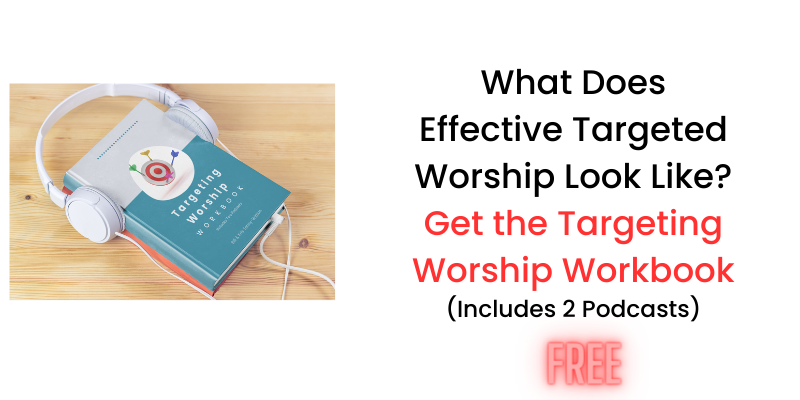There’s a marketing axiom that says if you try and market to everyone, you market to no one.
It works that way in the church too. When a church tries to reach “everyone,” it effectively reaches no one. That doesn’t mean everyone isn’t welcome … if everyone isn’t welcome, you’re not running a church, you’re a private member’s club.
But just because everyone’s welcome, it doesn’t mean you should (or even can) accommodate everyone. For instance, if you’re reading this blog, it’s probably true that your congregation can’t accommodate German, Spanish, Russian, Chinese, and Swahili speakers. Would you welcome them with open arms? Certainly. Would they get much out of your worship service? Probably not because you cannot accommodate everyone. And if your church can’t accommodate everyone, there’s no sense in trying to attract everyone. If you’re not going to try and attract everyone, then you’ve already decided to “target” an audience.
If your church can't accommodate everyone (and it can't), then there's no sense in trying to attract everyone. @billtb Share on XTo be honest, most churches today have opted to try and target a shrinking audience … adults who have some history in the church. Lapsed church-goers. The Dones. But almost every church is trying to target all of them all at the same time.
The problem is, a twenty-something with church experience who’s left the church has very little in common with a sixty-year-old who’s left the church. You won’t “catch” them with the same bait. For instance, the learning style of the twenty-something is highly interactive – they tune out with lectures if they can’t participate/interact on multiple levels. The learning style of the sixty-year-old is image and video driven – and they get pretty uncomfortable when you ask them to interact. Can the two worship together? Yes, but if they’re a first-time guest and they can’t connect/relate with the learning style of your sermon, it’s unlikely they’ll return. In addition, the twenty-something likely listens to Hip-Hop (it’s the #1 music genre in the US today) – the sixty-something definitely doesn’t listen to Hip-Hop. Build a service for the sixty-something, the twenty-something can’t relate … and vice versa.
And that’s just learning style and music decisions you must make to reach a target audience. Then there’s technology, sermon content, hospitality expectations, dress, schedule factors, children options, marketing mediums, … and that’s just a few of the many options you have to customize to your target audience.
The fact is, Jesus had a target audience: The lost sheep of Israel (Matthew 15:24). Everyone was welcome, though he chose not to accommodate everyone (Luke 8:38–39; John 12:20–36). An effective church can do no other.
Order Your Targeting Worship Workbook and Start Reaching More Neighbors Than Ever Before



